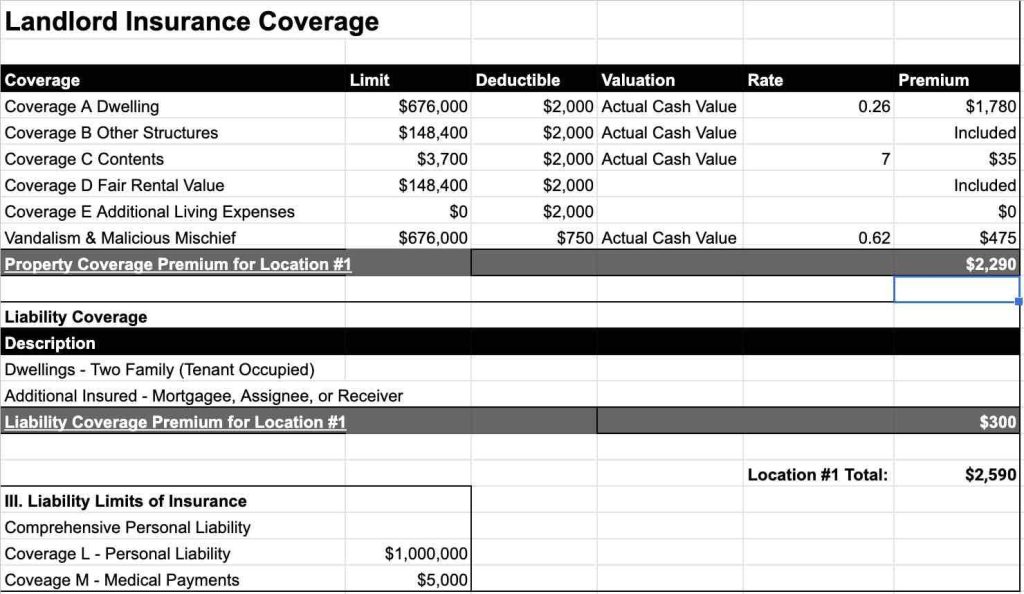If you’re a landlord, protecting your property is probably top of mind—but what about protecting yourself from unexpected mishaps? That’s where liability coverage in landlord insurance comes into play. Whether it’s a tenant’s guest slipping on a wet floor or accidental damage caused by a maintenance worker, liability coverage can save you from hefty out-of-pocket expenses and stressful legal battles. In this article, we’ll break down everything you need to know about liability coverage in landlord insurance—why it’s essential, what it typically covers, and how to make sure your policy has you fully protected. Let’s dive in and make sure you’re covered from all angles!
Table of Contents
- Understanding Liability Coverage and Why It Matters for Landlords
- Common Scenarios Where Liability Coverage Protects You
- Tips for Choosing the Right Liability Coverage Limits
- How to File a Liability Claim and Avoid Common Mistakes
- Key Takeaways
Understanding Liability Coverage and Why It Matters for Landlords
When you rent out a property, protecting yourself from unexpected financial loss is crucial. Liability coverage acts as a safety net if someone is injured on your rental property, or if you’re held legally responsible for property damage or bodily injury caused to others. Without this protection, you could be on the hook for costly medical bills, legal fees, or settlement costs, which can severely impact your finances. This coverage helps landlords sleep easier, knowing they have a shield against potential lawsuits that arise from everyday risks on their property.
Key reasons liability coverage is essential for landlords include:
- Coverage for medical expenses if a tenant or visitor suffers an injury on your rental property.
- Protection against legal fees and settlements if you’re sued for negligence.
- Safeguarding your personal assets in case of lawsuits related to your rental business.
By including liability coverage in your landlord insurance policy, you’re not just securing your property — you’re shielding yourself from financial disasters that could disrupt your life and business. It’s a smart, proactive step that every landlord should consider seriously.
Common Scenarios Where Liability Coverage Protects You
Imagine a tenant slipping on an icy patch in the shared walkway and sustaining a serious injury. Without liability coverage, the financial burden of medical bills and potential lawsuits would fall squarely on you. This type of insurance steps in to cover those unexpected costs, protecting your rental property investment from sudden claims. Another common scenario involves damage caused by tenants to neighboring properties, such as a fire accidentally started during a cooking mishap. Here, liability coverage can help with the legal defense fees and compensation, letting you focus on managing your property rather than battling legal troubles.
Besides these dramatic cases, liability coverage also covers everyday incidents that often catch landlords off guard. This includes situations like a visitor tripping over loose flooring in a rental unit or a pet causing injury in common areas. Common examples where liability coverage safeguards you include:
- Accidental injuries on your property, whether inside the home or in shared spaces
- Property damage claims from neighbors due to incidents originating in your rental
- Legal fees and settlements arising from tenant or visitor lawsuits
By understanding these typical scenarios, landlords can appreciate how essential liability coverage is for comprehensive rental protection.
Tips for Choosing the Right Liability Coverage Limits
Determining the appropriate liability coverage limits starts with a clear understanding of the potential risks associated with your rental property. Consider factors such as the property’s value, location, and the number of tenants. Areas with higher foot traffic or older buildings might pose greater risks of accidents or injuries, necessitating higher coverage limits. Additionally, think about your personal financial situation—higher limits offer better protection against costly lawsuits, helping to safeguard your assets and peace of mind.
When evaluating your options, keep these key points in mind:
- Legal requirements: Ensure coverage meets or exceeds your state’s minimum liability insurance laws.
- Property specifics: Some features like swimming pools or playground equipment increase liability risk.
- Tenant profile: Multiple tenants or short-term rentals can increase exposure.
- Long-term costs: Higher limits can mean higher premiums but greater financial security.
How to File a Liability Claim and Avoid Common Mistakes
When you’re ready to file a liability claim as a landlord, the key is to act promptly and stay organized. Start by notifying your insurance provider immediately—delays can complicate or even jeopardize your claim. Gather all relevant documentation such as photos, incident reports, and witness statements. This evidence strengthens your case and speeds up the claims process, so don’t underestimate its importance. Remember to maintain open communication and respond quickly to any requests from your insurer to avoid unnecessary delays.
Many landlords trip up by overlooking simple steps that could prevent claim denials or reduced payouts. Avoid these common pitfalls by:
- Exaggerating damages – Accurate and honest reporting builds credibility.
- Failing to review your policy before filing – Knowing your coverage limits can save you from surprises.
- Neglecting to secure the property after an incident – This can worsen damages and reflect poorly on your claim.
Staying proactive and informed can make all the difference in a smooth, successful liability claim experience.
Key Takeaways
Thanks for sticking with me through the ins and outs of liability coverage in landlord insurance. Understanding this coverage can save you from unexpected expenses and keep your rental business running smoothly. Remember, protecting yourself from liability claims isn’t just smart—it’s essential. If anything we covered today sparked questions or you want to dive deeper, don’t hesitate to reach out to an insurance professional who can tailor the right coverage for your unique situation. Here’s to keeping your property—and peace of mind—safe and sound!





